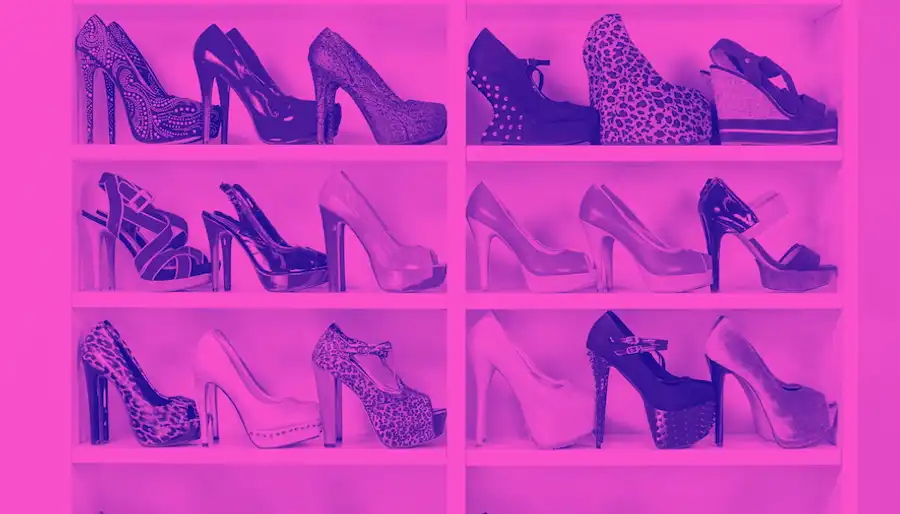Discussing High-Heeled Shoes
14 December 2022

Really, high heels are car-to-bar shoes. And that’s about it.
I get it. High heels are fashionable, make us taller (I need all the help I can get there), and are an expected addition to occasion wear, office wear and even day-to-day wear.
The issue is they are really not good for your body.
Your muscles don’t really care what you look like, but they mind a great deal when they are being asked to work in an unnatural position.
Below I have summarised why your body hates heels, and I have also included some top tips for heel lovers as I sometimes understand in life they are coming out of the cupboard!
So how do high heels cause mechanical dysfunction? Let’s start from the ground up.
Wearing high heels (particularly a stiletto heel) places the feet in a downwards-pointing position (plantarflexion), which places a lot of pressure on the forefoot (the higher the heel the greater the pressure).
This pressure as well as most commonly causing pain can also lead to bunions and neuromas in the foot. High heels also cause the tendons and ligaments that support the arch in the feet to tighten, which can in turn lead to plantar fasciitis (trust me that is painful!). High heels especially if narrow can cram the toes together meaning that they are in an unnatural position, this can cause blisters and over time conditions like hammer-toe.
Moving up the biomechanical chain to the ankle, high heels limit the range of movement and function of the ankles.
The calf muscles are shortened, as the Achilles tendon is shortened. As well as meaning that the power of the calf muscles is limited, and so is the movement of the foot, as well as the Achilles being in a state of contraction – this can become inflamed and lead to Achilles tendonitis.
Let’s move up into the knee. Did you know that osteoarthritis of the knee is more common in women than men? Researchers believe this is down to the use of heels.
Wearing high heels means the distance from the ground to the knee is larger, meaning the knee is under more compression.
When wearing heels the knee is often held slightly flexed (bent) – this causes the bones of the lower leg (tibia and fibula) to rotate inwards, meaning that one side of the knee is being loaded more than the other – this is likely the main contributor to the development of knee osteoarthritis.
If you already have osteoarthritis of your knee/s, you should avoid wearing high heels or risk accelerating further damage.
Moving into our hips – the biggest impact of high heels is on the hip flexors which are located at the front of the hip joint. When in heels the hip flexors are shortened (like the calf muscles). Over time this can cause a decrease in the natural curve of our lower back, which can then result in spinal pain, as well as hip pain.
Talking of back pain, as mentioned above, wearing high heels reduces the outwards curve (lordosis) of our lower back (lumbar spine). This curve is there to help shock absorb. So, with the lordosis reduced our amazing body will look to compensate, and it continues to move up the mechanical chain into our thoracic spine (mid back) – causing it to extend. Another way the body compensates is to lean forwards, this causes our spinal muscles to be overused as they desperately try to work in an unnatural position, which could in turn lead to chronic back pain.
A word on balance and walking. As a Pilates instructor, I always work on balance with my clients. As an Osteopath, I use balance-based exercises to help rehabilitate injuries – especially ankle and knee injuries. However, when working balance this is always done in trainers or bare feet. Walking in heels is tough for the balance system, and navigating pavements with cracks and dips is an accident waiting to happen – you are more likely to fall and do damage in heels than in flats.
Walking in heels is also a challenge as the foot does not have the power to push off the ground efficiently, meaning the body is moving in a way it was not designed for.
So there we have it, your body just isn’t built for high heels, and trust me, you look just as fabulous in flats – and your body will be grateful. If you are going to wear heels, here are some top tips:
- Use them for occasions, not daily use.
- If heels are an expected thing with your work, do not travel in them, pop on some trainers for the commute. Put your heels on when you get to work, and take them off when it is time to go home.
- Heels ideally need to have a supportive insole and be as low (try to stick to no more than 1.5 inches) as possible.
Always happy to help you all,
Emily Coombes
Registered Osteopath